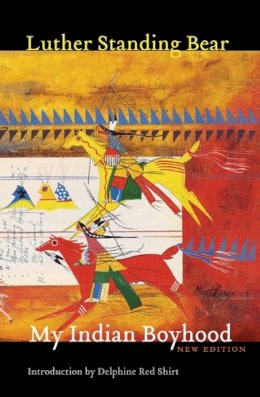4%OFF

Stock image for illustration purposes only - book cover, edition or condition may vary.
My Indian Boyhood
Luther Standing Bear
€ 17.99
€ 17.34
FREE Delivery in Ireland
Description for My Indian Boyhood
Paperback. A memoir of life, experience, and education of a Lakota child in the late 1800s. The author describes the home life and education of Indian children. Like other boys, he played with toy bows and arrows in the tipi before learning to make and use them and became schooled in the ways of animals and in the properties of plants and herbs. Num Pages: 198 pages, Illus. BIC Classification: 1KBBNR; 3JH; BG; JFSL9. Category: (P) Professional & Vocational. Dimension: 5182 x 3429 x 13. Weight in Grams: 250.
Although the traditional Sioux nation was in its last days when Luther Standing Bear was born in the 1860s, he was raised in the ancestral manner to be a successful hunter and warrior and a respectful and productive member of Sioux society. Known as Plenty Kill, young Standing Bear belonged to the Western Sioux tribe that inhabited present-day North and South Dakota. In My Indian Boyhood he describes the home life and education of Indian children. Like other boys, he played with toy bows and arrows in the tipi before learning to make and use them and became schooled in ... Read more
Show LessProduct Details
Format
Paperback
Publication date
2006
Publisher
University of Nebraska Press United States
Number of pages
198
Condition
New
Number of Pages
198
Place of Publication
Nebraska, United States
ISBN
9780803293342
SKU
V9780803293342
Shipping Time
Usually ships in 15 to 20 working days
Ref
99-99
About Luther Standing Bear
Luther Standing Bear is the author of Stories of the Sioux, My People the Sioux, and Land of the Spotted Eagle (all available in Bison Books editions). Delphine Red Shirt is a member of the Oglala Sioux tribe and the author of Turtle Lung Woman's Granddaughter and Bead on an Anthill: A Lakota Childhood, both available in Bison Books editions. ... Read more
Reviews for My Indian Boyhood
"The book is replete with information. Standing Bear details many native beliefs and interpretations, as well as the symbolism, of the things of nature that guided the very lives of the Lakota, and makes lucid many conceptions that white people have usually regarded as mere superstition because not understood."—Saturday Review of Literature
